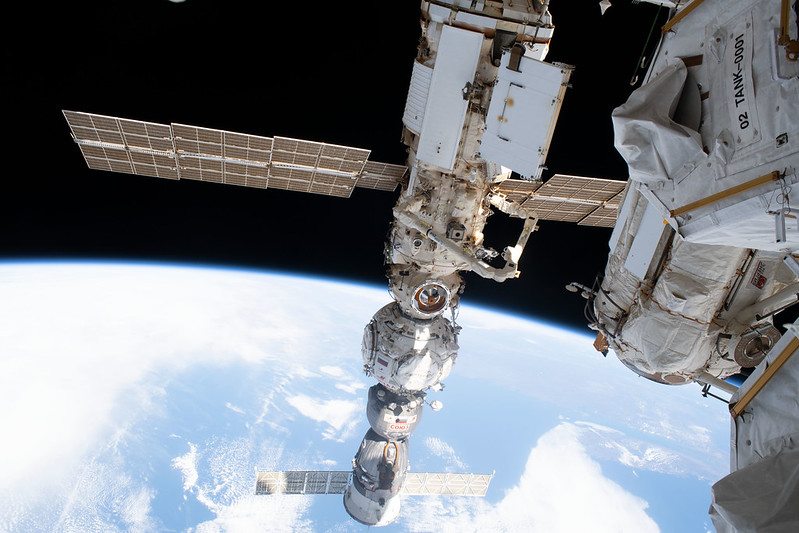Today in 2006, tech mogul and engineer Anousheh Ansari headed to the International Space Station for a nine day mission.
She was the first Muslim woman to travel to space, and while her mission was focused mostly on scientific research, it did lead some religious scholars to note about how some of the religious traditions we practice here on Earth can get complicated when you’re spending time far above our home planet.
For example: many Muslims pray five times a day, and those prayers take place at specific times during the day, like sunrise.
When you’re on Earth, that’s easy enough to manage, but when you’re orbiting Earth in a space station, you’re seeing sunrise and sunset about every 90 minutes.
Muslims also face in the direction of Mecca, in Saudi Arabia, during the prayers.
But when you’re in a craft that’s moving around the Earth five miles a second, which direction do you face?
And you can’t really set down a prayer mat when people and objects are floating around up there.
Again, Ansari said her trip to space was focused on science, saying only that she considered religion and science “very complementary.”
But the year after her mission, Sheikh Muszaphar Shukor, a Malaysian astronaut and doctor, said he did want to practice his faith during his trip to space.
The government of Malaysia convened hundreds of religious scholars, scientists and astronauts to figure out exactly how he could do that.
And broadly, they advised Shukor to do the best he could.
They said he could try to pray toward Mecca, or toward the Earth if that wasn’t feasible.
If he couldn’t prostrate himself while weightless, he could approximate those motions.
As for when to pray (or when to fast if traveling to space during Ramadan), they suggested the astronaut follow the time zone in use in the place where the launch took place, which in Shukor’s case was Kazakhstan.
But above all, they recognized that being in space is a pretty unusual situation for a devout person; it’s not really a time to ding somebody over how they try to adapt their religious practice.
They said there was even a verse in the Quran that encouraged space exploration, which says, “If you can pass beyond the zones of the heavens and the earth, then pass!”
Today in 1981, a world record moment for the West Edmonton Mall in Alberta.
The world’s largest parking lot had space for 20,000 vehicles.
Fitting for a mall that’s also held records at times for largest shopping mall, largest indoor amusement park and largest indoor water park.
Muslims in Outer Space (Harvard Divinity School)
Canada mall sets parking‑lot record (History.com)

